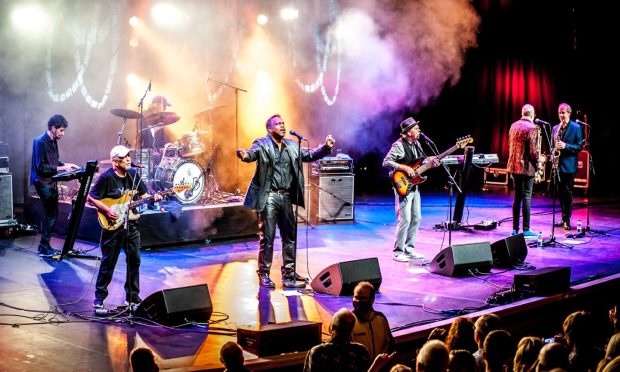Although her historic fiction novels are often labelled “cosy crime”, Scottish author and activist Sara Sheridan is keen to point out that her work has a significantly dark edge.
The Edinburgh-born author is perhaps best known for her series of noir mysteries featuring her fictional ex-secret service heroine, Mirabelle Bevan, set in the 1950s.
Glamorous Mirabelle now returns in Highland Fling, the penultimate book in the Mirabelle Bevan collection (before Celtic Cross), which is currently being serialised in The Courier.
A Scottish setting
Unlike previous volumes set in locations such as Paris and London, Highland Fling is set in Scotland, against a backdrop of late 1950s Cold War anxiety.
Shortly after Mirabelle arrives in the Highlands to visit Superintendent Alan McGregor’s family on their vast estate, the body of an American fashion buyer turns up brutally murdered, plunging the local village into disarray.
Mirabelle can’t resist investigating, and what started as a relaxing break in scenic surroundings soon spirals into a week fraught with danger.
“I don’t know about the label ‘cosy fiction’ – I think it can be a bit misleading as there’s some quite dark stuff in there,” says Sheridan.
Subtle darkness
“But it isn’t overt violence as such –although there’s a darkness and implied violence, it isn’t as overt as in forensic crime books and procedural dramas.
“And of course this book isn’t procedural in the way a lot of modern crime fiction is, because it’s set at a time when there weren’t so many advances in forensic technology.”
Instead, it’s all about Mirabelle’s ability to listen to people and understand what they’re saying, and what their motivations are.
“She is able to see things from other people’s perspectives and this is what helps her solve the mysteries,” says Sheridan.
Superintendent McGregor
Highland Fling was borne out of the author’s desire to delve into Superintendent McGregor’s upbringing and family background. She also explores the dynamic between him and Mirabelle, which changes significantly once they go from flirting to being a couple.
“All the way through the series it’s been about Mirabelle and McGregor,” adds Sheridan.
“I’ve always had it in my head that we’d go and find out a bit more about his history. So I thought this book would be the perfect opportunity to do so. He had this very posh mum who had come from a Highland estate. Of course, due to his age only his younger relatives are alive, so we meet his cousin who owns the estate now. We get to find out what his family is like.
“My thoughts were, how can I best explain where he comes from and how can I make their relationship stronger, by letting her find out more about him?”
Sarah Sheridan
When she was growing up, Sarah Sheridan though she has never lived there. When she was 18 she left Scotland to study at Trinity College in Dublin, where her interest in Gaelic was ignited – a passion she would continue to nurture on her return to Scotland later in life.
She has written more than 20 books in various genres, with her first novel Truth or Dare winning the Scottish Library Award and being shortlisted for the Saltire.
As well as Gaelic, Sheridan has a particular interest in feminism and female history. In 2019 she re-mapped Scotland according to women’s history for Historic Environment Scotland and the resulting book, Where are the Women, was listed as one of the David Hume Institute’s Books of the year 2019.
Feminism and society
“A lot has been achieved in terms of equality for women but we still have a long way to go, definitely,” explains Sheridan. “The Mirabelle series isn’t directly about feminism but obviously has a strong female protagonist.
“I don’t have a specific readership in mind, I just write the kind of stories that interest me as a reader. I imagine the kind of book I would pick up in a shop.
The 1950s fascinate me as a decade. The beginning of the decade was all about the aftermath of the war, and then towards the end of the decade the world begins to recover and cheer up. At the same time though, there are the beginnings of the Cold War.
The Highlands
“There’s also something incredible about the Highlands. I think it’s a great setting – the beauty, the hills, the freedom, the linguistic diversity.
In the Edinburgh I grew up in, we spoke English and a bit of Scots, but there wasn’t any Gaelic. So when I visited the Highlands, it was really exciting to experience this part of Scottish culture.”











